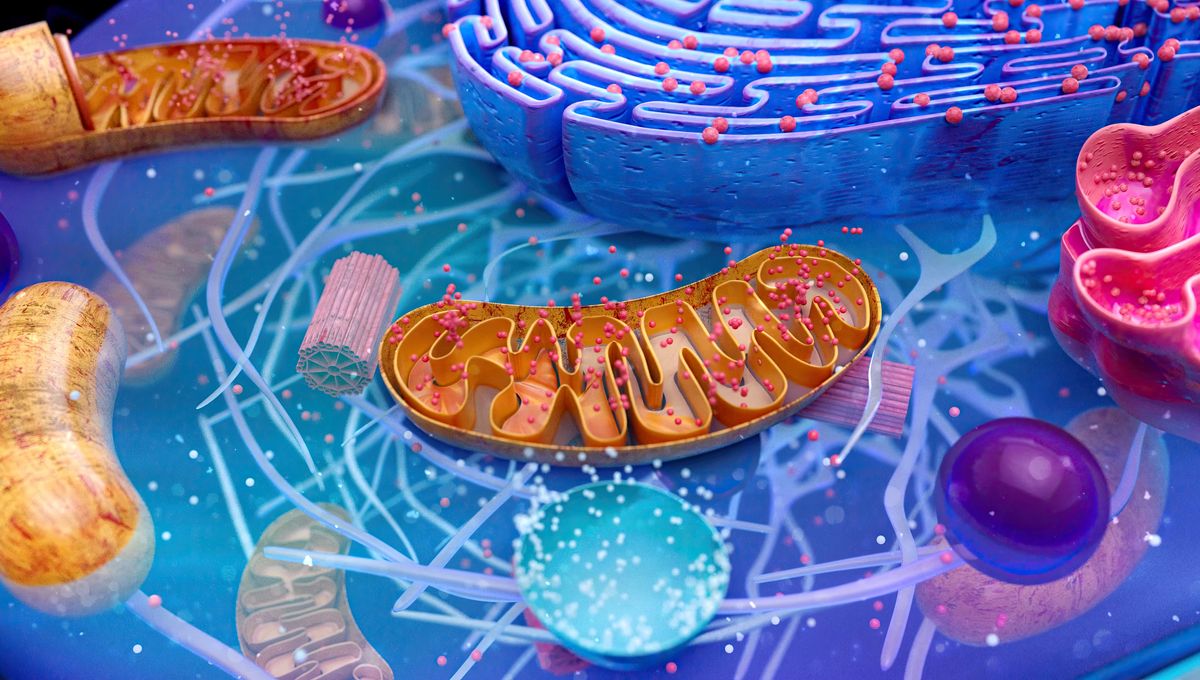
A detailed analysis of five recently discovered microscopic eukaryotes has identified one that appears to have dispensed entirely with its mitochondria. If that is the case, Skoliomonas litria will join a highly exclusive club, becoming the first free-living eukaryote ever discovered to have lost its mitochondria.
“Mitochondria are the powerhouse of the cell!” You might remember this refrain from your school days, and it’s true. Mitochondria, miniscule organelles found inside almost every cell in our bodies, are essential for generating energy. The acquisition of the mitochondria, way back in evolutionary time, is considered a key event on the road that led to eukaryotes, the domain of life that encompasses all animals, plants, and fungi.
But nature loves to throw in a curveball, and in recent years some eukaryotes that seem to get along fine without typical mitochondria have emerged. The first to manage without them altogether popped up in 2016 in the form of Monocercomonoides. Unlike some extremophiles that contain mitochondria that have been so modified as to be almost unrecognizable, Monocercomonoides lacks “all hallmark mitochondrial proteins,” according to the study authors.
The reason Monocercomonoides is able to get along without such an essential piece of kit is that lives in a very oxygen-poor and nutrient-rich environment: inside the guts of other animals. In the case of the study specimen, it was isolated from the intestines of a chinchilla. By simply absorbing nutrients from these surroundings, and “borrowing” genes from neighboring bacteria to fulfill other essential mitochondrial functions, Monocercomonoides has adapted to the powerhouse-free life.
The Monocercomonoides genus belongs to the phylum Metamonada. All the other metamonads we’ve studied to date have these highly modified mitochondria, called mitochondrion-related organelles or MROs. One better known example is the parasite Giardia lamblia, famed for its unusual cell biology with a double nucleus – as well as its ability to cause human misery in the form of copious diarrhea. Giardia contains very simple MROs called mitosomes.
While some metamonads, like Monocercomonoides and Giardia, live inside other organisms as parasites or commensals, a new study embarked on a closer analysis of five recently discovered metamonads that are free-living.
The organisms were species from two genera, Skoliomonas and Barthelona. The study authors, led by Shelby K. Williams at Dalhousie University, produced draft genomes, transcriptomes, and proteomes for each of the species, characterizing as far as possible the full range of genes, RNA transcripts, and proteins these single-celled organisms possess.
Phylogenomic analysis showed that both of these genera together form their own clade, which the authors named “BaSK”. When it comes to their MROs, BaSKs “display a level of MRO reduction not typically seen in free-living metamonads and which is independent of the reduction found in the parasitic diplomonads [like Giardia],” the authors explain.
Just as Monocercomonoides had to borrow some machinery from bacteria, all the BaSKs have acquired systems to replace one of the key components of mitochondria, the iron-sulfur cluster system. This is vital for assembling groups of iron and sulfur molecules that are needed by a number of cellular proteins.
But even among this collection of certified biological weirdos, one stood out. Skoliomonas litria appears to have no mitochondrial pathways at all.
“No proteins were confidently assigned to the predicted MRO proteome of this organism suggesting that the organelle has been lost,” the authors write. If it is the case that S. litria has no MRO whatsoever, it would make it the first example of a free-living metamonad to have lost the organelle – remember, Monocercomonoides is a commensal.
It’s an intriguing question, and more research will be needed to truly get to the bottom of it. Among other things, the authors suggest that further studies will need to figure out how and where S. litria makes its ATP – the source of cellular energy – without oxygen. But it’s possible we could be looking at the first discovery of a free-living eukaryotic organism that has “completely dispensed” with mitochondria.
Just goes to show, there really is an exception to every rule.
The study is published in Nature Communications.
Source Link: Single-Celled Organism May Be First Free-Living Eukaryote Without Mitochondria Ever Discovered